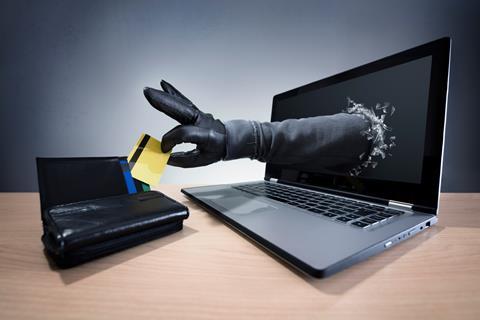The loss adjuster has seen an uptick in false document fraud during lockdown
Bogus documents, doctored invoices and manipulated images are all examples of false documents.
There has been an uptick of 3% in false document fraud during the UK’s Covid-19 pandemic lockdown, according to Steve Crystal, head of financial crime at loss adjuster Sedgwick International UK.
Crystal is advocating a two-pronged approach to tackle this issue, using both humans and machines.
Insurance false document fraud involves altering or modifying a document to deceive another person when filing a claim.
Crystal said that easier access to technology during the Covid-19 pandemic lockdown has contributed to this rise in fraud, in particular as increasing numbers of customers have turned to online shopping over the last six months due to Covid mitigation measures, such as social distancing and the closure of non-essential shops.
However, Crystal told Insurance Times that the difference now is that “fraudsters are [taking] a digital approach. It’s the use of copiers, scanners, printers, software such as Photoshop. It’s technology coupled with people being at home with more time on their hands”.
Crystal said this has resulted in “more suspicious looking documents and photos being submitted as part of a claim” despite the uptick being “difficult to quantify”.
He predicted that the insurance industry might face “trickier times ahead” as the economic downturn post-pandemic unravels and financial stress worsens.
Human vs machine
Although some of the false digital documents that Sedgwick has seen are convincing at first glance, these are actually “amateur”.
Crystal’s message to the insurance industry is: “Do not underestimate the resolve of some of these would-be fraudsters and their determination to beat the system.”
Crystal continued with an example of “good old-fashioned claims handling”, which involved an invoice form that was swiped from a DIY store counter to doctor a fraudulent e-receipt.
The claims handler called the proprietor as the document looked bogus. It was then confirmed that the proprietor had not supplied the goods listed and the invoice number was incorrect.
Crystal said this demonstrated the “value of a human touch” in claims handling. However, he believes a combined machine and human approach is needed to tackle false documents.
Another case involved two photos overlayed – one of a tree and another of a wall to make it appear like the tree had fallen.
Sedgwick is developing digital initiatives to “turn up the dial on fraud” Crystal added. It will be introducing a digital feature in real-time to detect documents and photos that have been modified.
Earlier in the year, Sedgwick piloted an automated document validation system, which identified indicators of risk in electronic documents.
When the firm applied this technology, 3% of electronic documents were flagged as ”high risk”. It resulted in three out of four of these claims being put forward for investigation.
This 3% is a higher figure than what Sedgwick usually sees, however Crystal said that “the majority of claims are genuine and valid”.
Spot checking
Crystal advised claims handlers to be aware and look out for alterations in layout, spelling errors, grammatical mistakes, whether the VAT adds up correctly, wrong invoice numbers and ink speckling.
He named home insurance as the line where the majority of suspect document and photographs have been identified.
This is certainly the case for lower value claims, as claims handlers use fast-track processes to manage them, which means fraudulent documents can slip through the net.
Crystal pointed out that often fraudsters begin with smaller claims and progress to larger ones.
“Having the digital capability to automatically conduct document and photo analytics to determine if they have been fabricated is crucial,” he said. He stressed that there are a number of free resources claims handlers can use to identify bogus document images.
Another example involved a tradesman’s business card being used to create a fraudulent invoice template.
Explaining how fraudsters get their hands on such things, Crystal said that some documents have been created using blank templates that can be obtained online from novelty document websites, which often do have counter fraud warnings on the site.
Crystal speculated whether some fraudsters have clocked on to the fact that most of the insurance industry is working from home and are, therefore, taking a chance with lower value claims in the hope they will go unnoticed.
He urged claims handlers to apply additional diligence with spot checks and to take advantage of software that helps with this.

Hosted by comedian and actor Tom Allen, 34 Gold, 23 Silver and 22 Bronze awards were handed out across an amazing 34 categories recognising brilliance and innovation right across the breadth of UK general insurance.





















































No comments yet